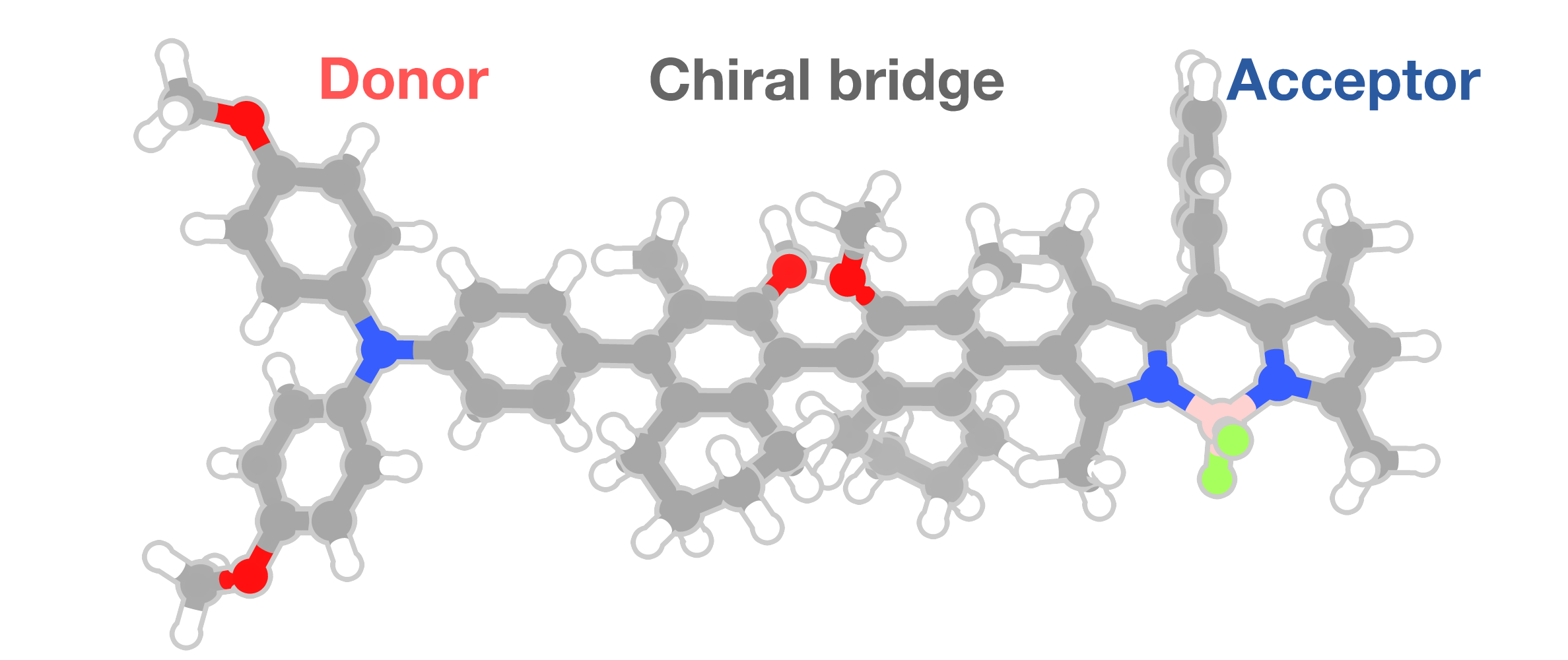The Fay group explores a range of problems in chemistry. We develop theory and computational tools to tackle these problems. Whilst our interested are broad, they can be broadly categorised as below. [More information to be added soon.]
Chirality Induced Spin Selectivity (CISS)
 Just over 25 years ago a remarkable effect was discovered: electron transport through chiral molecules is spin-selective, so one of the two electron spin states is more likely to be observed after the electron has travelled through a chiral molecule. Many theories of this effect have been proposed, but no single theory has emerged which can quantitatively explain the CISS effect across all experiments. In our group we work to push the boundaries of the theory of the CISS effect and bridge the gap between theory, experiment and application of chirality-dependent spin effects.
Just over 25 years ago a remarkable effect was discovered: electron transport through chiral molecules is spin-selective, so one of the two electron spin states is more likely to be observed after the electron has travelled through a chiral molecule. Many theories of this effect have been proposed, but no single theory has emerged which can quantitatively explain the CISS effect across all experiments. In our group we work to push the boundaries of the theory of the CISS effect and bridge the gap between theory, experiment and application of chirality-dependent spin effects.
Electron and energy transfer
When molecules absorb energy from light a plethora of complex processes can occur, transferring energy and electrons as well as reshaping chemical bonds. In our group we work to develop quantum dynamics methods and tools for describing reactions involving electronic excited states in the condensed phase.
Photosynthesis and photoprotection
Photosynthetic organisms can convert light energy absorbed from the sun into chemical energy with remarkable efficiency, potentially by harnessing quantum effects. In fact these organisms are so good at absorbing light energy that they need to protect themselves from harmful side reactions like the formation of highly reactive oxygen species, which they do through various photoprotective mechanisms. In our group we develop multi-time-scale models and methods to simulate the complex photosynthetic and photoprotective processes in light-harvesting organisms, in order to understand how this process, essential to life on Earth, functions.
Magnetic field effects in chemistry
Magnetic fields as small as the Earth’s magnetic field (much weaker than that of a fridge magnet) can influence chemical reactions involving unpaired electron spins at room temperature. This is remarkable given that the interaction energy is orders of magnitude smaller than thermal energy. We work with experimental groups to develop models to understand these fascinating effects, and how to harness them for applications in quantum information science and sensing.